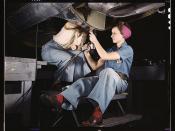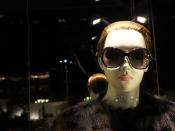Introduction
Women in the 21st century have the privilege to work, study and live independently solely through the struggles and effort put forth by the females of the past pushing the Women's movements ahead. The results of the women who tried to break the barrier provided to today's society with women carpenters, lawyers, doctors, firefighters, police officers and etc., jobs and careers that were once only for men. Occupations of these sorts require an educated woman that is willing and have the ability to balance their time between family and work, something that was strongly prohibited in the earlier periods. Women have come a long way in achieving the freedom that they have today.
Unlike in present times where women are sharing their time between family, career and even sometimes education, women of the past to only bear and rear children, having no say in the duties of men only to listen and obey.
Similar traditions were found amongst oriental females of the past. These women traditionally were required to remain at home and nurture their children and serve their husbands. These strict traditions promote power and control amongst the men and as a result women were discouraged from working and/or learning. Modernization in Korea and China supported the women in changing their own views, values and beliefs about themselves. The superiority of men and the unfairness of women caused women in Korea and China to take action in hopes of changing traditional views of gender roles in family, education and work force. Drastic measures were taken while gradual changes were observed. The roles and status of women in Korea and China improved as the barrier between the two sexes began to crack while women's movements were established. The women's movements of the 1950s have given back the long awaited...


